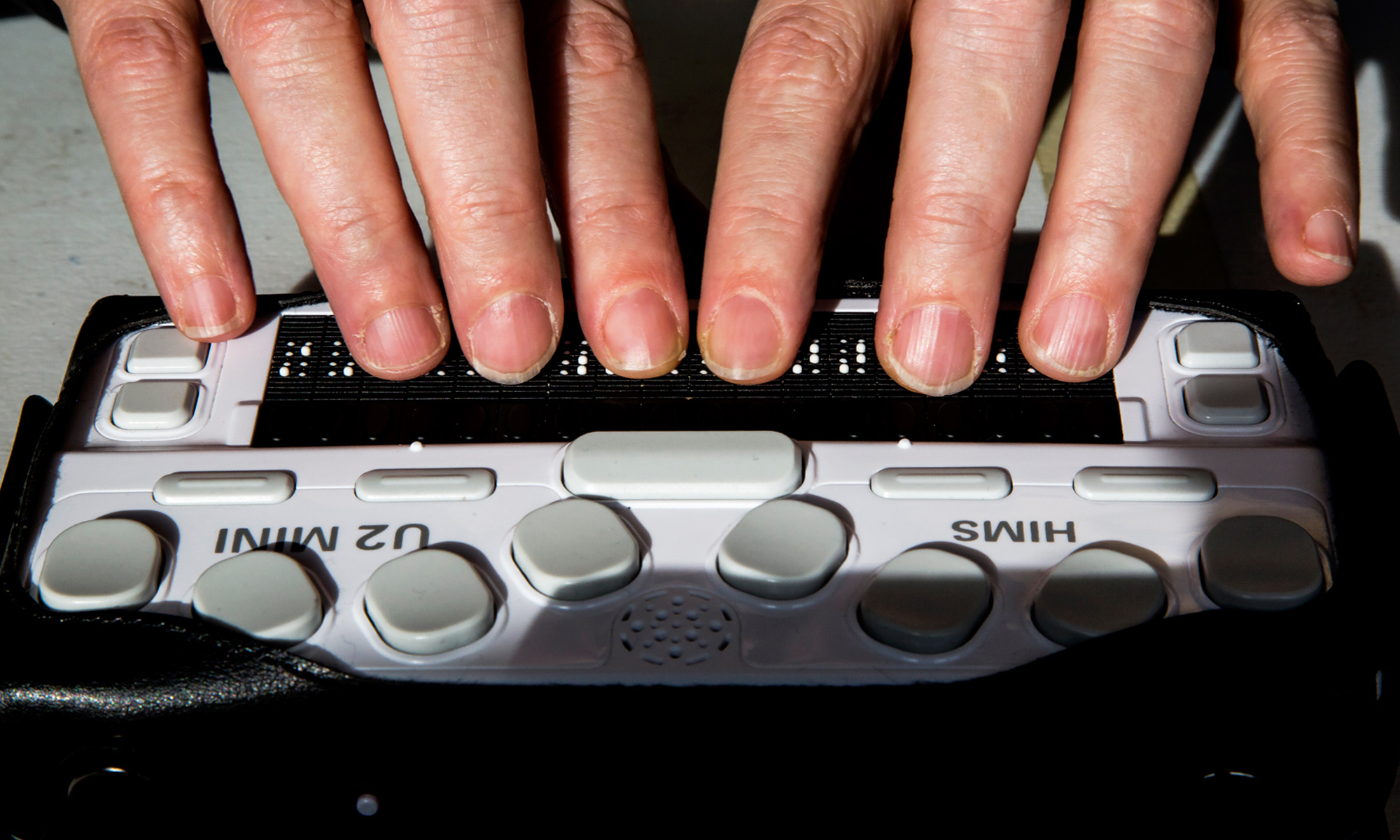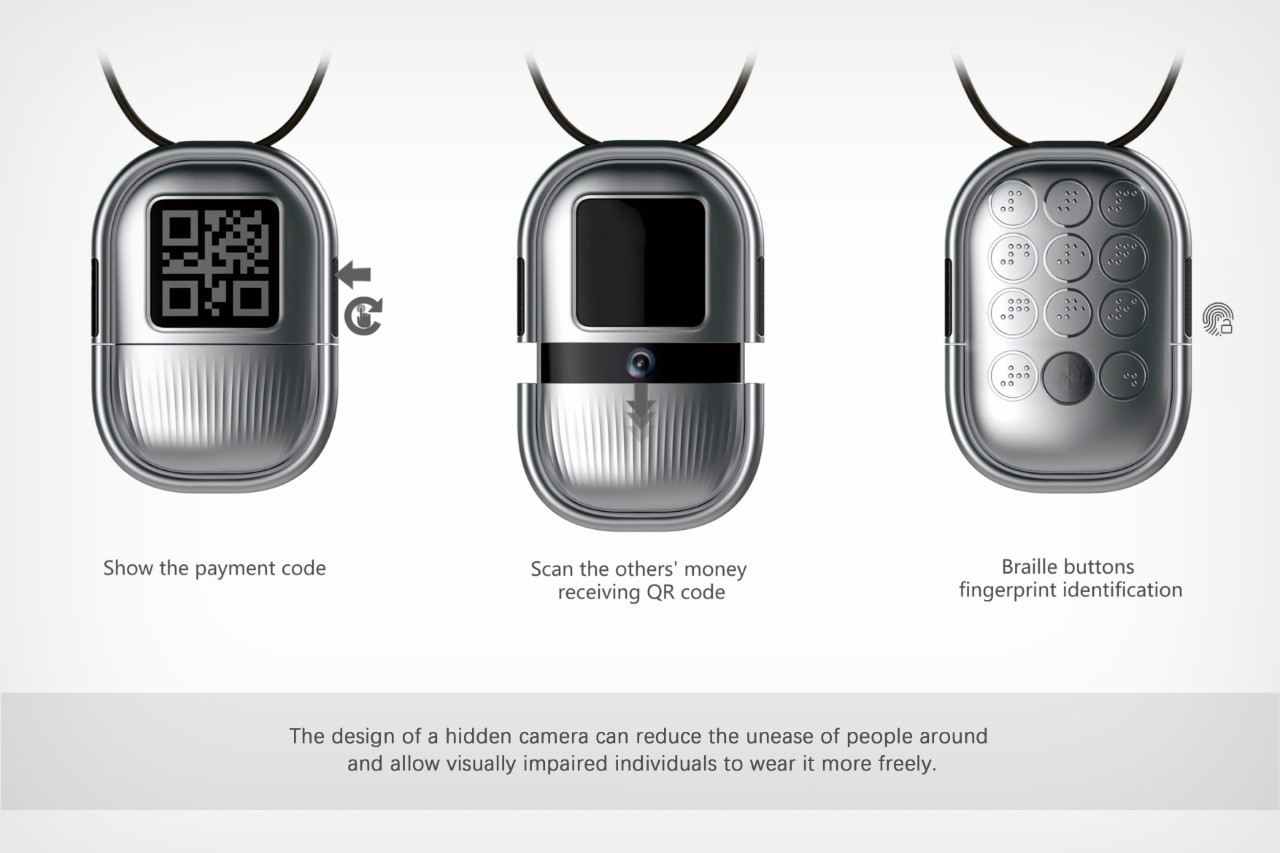Screen Readers for the Blind: Accessing Content Without Barriers
Wiki Article
An Overview to Life-altering Assistive Modern Technology for the Blind and Visually Impaired
The advancement of assistive technology has ushered in a transformative age for individuals who are visually impaired or blind, offering tools that enhance freedom and enhance day-to-day experiences. Developments such as clever navigating gadgets and AI-driven applications are redefining exactly how users engage with their surroundings, while easily accessible analysis options and clever home innovations promise to more boost the high quality of life. As these technologies remain to develop, one must consider not just their performances but also their effect on promoting freedom and inclusivity. What does this mean for the future of availability?Smart Navigating Tools
Smart navigating devices are reinventing the means individuals who are visually impaired or blind engage with their setting. These sophisticated innovations, which integrate general practitioners, audio feedback, and haptic signals, supply individuals with crucial information regarding their environments, improving their freedom and movement.
One popular example is the usage of clever canes geared up with sensors that detect challenges and offer real-time comments via resonances or audio cues. These devices enable customers to navigate complex atmospheres, such as busy streets or crowded public rooms, with enhanced confidence. In addition, wearable gadgets, such as clever glasses, are being established to help in recognizing faces, reviewing message, and identifying items, better augmenting the individual's spatial understanding.
Furthermore, clever navigating tools are significantly including man-made intelligence to analyze data and adapt to customers' choices. This individualized strategy not only enhances navigating effectiveness however additionally promotes a feeling of empowerment among customers. As modern technology remains to development, the potential for wise navigating devices to create an extra available and inclusive globe for individuals that are blind or visually damaged stays encouraging, inevitably reshaping their daily experiences and interactions.
Cutting-edge Mobile Applications
Mobile applications are becoming effective tools for helping people who are visually impaired or blind, supplying a range of performances that boost daily living. These apps harness progressed modern technology to assist in everyday jobs, enhance availability, and promote freedom.One classification of innovative mobile applications focuses on visual recognition. Applications like Be My Eyes link customers with sighted volunteers using video clip telephone calls, allowing real-time assistance for tasks such as reading labels or navigating unfamiliar settings. In a similar way, applications like Seeing AI utilize expert system to explain surroundings, checked out message, and identify things, giving users with critical info at their fingertips.
An additional considerable area is navigating and positioning. Apps such as Aira and Close-by Traveler offer audio support, assisting individuals browse city spaces with convenience. They use individualized support, permitting for a more confident exploration of the environment.
In addition, wellness and health apps provide to certain requirements, such as medicine monitoring and fitness tracking. These applications intend to foster an alternative strategy to health, making certain that customers can preserve their wellness individually.
Wearable Assistive Tools
Wearable assistive tools stand for a significant development in technology created to sustain individuals that are visually impaired or blind. These tools improve movement and freedom by providing real-time responses about the surrounding atmosphere. Amongst the most notable wearable technologies are wise glasses furnished with sensing units and electronic cameras, which can determine obstacles and relay important info via audio cues.
An additional cutting-edge option consists of wrist-worn devices that make use of ultrasonic waves to discover barriers and supply navigational assistance. These devices often feature customizable setups, enabling customers to tailor the notifies to their specific requirements.
The combination of synthetic intelligence in wearable assistive modern technology is likewise significant, as it continuously boosts the precision and responsiveness of these tools. Overall, wearable assistive gadgets are changing the lives of the visually damaged and blind, promoting greater autonomy and enhancing lifestyle via innovative solutions.
Accessible Reading Solutions
Available analysis services play a vital role in allowing individuals who are aesthetically impaired or blind to engage with message across different formats. These services include a range of innovations and tools designed to improve analysis experiences, from typical print materials to digital web content.One prominent remedy is Optical Personality Recognition (OCR) technology, which transforms printed message right into digital style, allowing individuals to listen to or review the content using display viewers. Furthermore, specialized e-readers outfitted with text-to-speech abilities use adjustable reading experiences, enabling customers to change font dimensions and history colors for improved visibility.
Another effective method is braille display screens, which offer tactile comments by converting electronic message right into braille. This enables people to check out touch, cultivating higher independence and accessibility to literature. Additionally, mobile applications developed for reading checked books or documents can equip individuals with instantaneous accessibility to a vast library of materials.

Smart Home Technologies
Smart home modern technologies have actually revolutionized the way people that are aesthetically damaged or blind engage with their living environments, boosting both independence and safety and security. These innovative solutions utilize automation and connection to produce an available space customized to the demands of customers.Smart speakers and voice-activated assistants provide hands-free control over numerous tools, permitting customers to readjust illumination, safety and security, and temperature level procedures with simple voice commands. This performance reduces dependence on sighted assistance and promotes a sense of autonomy. In addition, smart lights systems can be personalized to deliver auditory feedback or tactile cues, making it possible for individuals to navigate their homes better.
Furthermore, security systems geared up with smart cameras and sensing units can send real-time signals to users, boosting individual safety without necessitating aesthetic verification. Automated door locks provide assurance, enabling individuals to protect their homes easily.
Incorporating smart home technologies not only boosts everyday living yet likewise motivates social communication through connected devices - Braille displays and notetakers. With recurring advancements in assistive innovation, the future appears promising, as more services will certainly emerge to more empower people that are blind or visually damaged, making sure an extra comprehensive and independent way of living
Final Thought
To conclude, the advancements in assistive technology for the aesthetically damaged and blind represent a significant jump towards boosting self-reliance and lifestyle. Smart navigating devices, cutting-edge mobile applications, wearable devices, accessible reading options, and clever home modern technologies jointly foster a comprehensive setting. This integration of technology not only improves wheelchair and everyday living however additionally equips people to involve fully with their surroundings, advertising greater freedom and engagement in culture.
Advancements such as clever navigation gadgets and AI-driven applications are redefining just how individuals engage with their environments, while easily accessible analysis services and smart home technologies guarantee to additional raise the high quality of life. As technology proceeds to advance, the capacity for smart navigation devices to develop a more comprehensive and obtainable globe for individuals who are blind or aesthetically impaired remains appealing, ultimately reshaping their day-to-day experiences Smart glasses for the visually impaired and communications.
Wearable assistive gadgets represent a substantial development in technology made to support individuals that are blind or visually impaired. Among the most significant wearable technologies are smart glasses outfitted with sensors and cams, which can recognize barriers and relay vital information with sound signs.
Smart navigation tools, innovative mobile applications, wearable tools, available reading services, and clever home innovations collectively promote an inclusive setting.
Report this wiki page